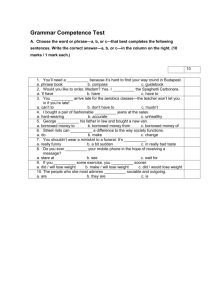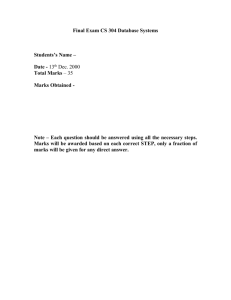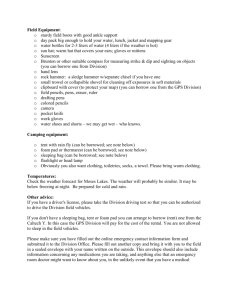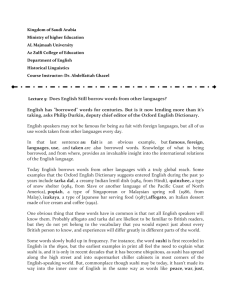Handout
advertisement
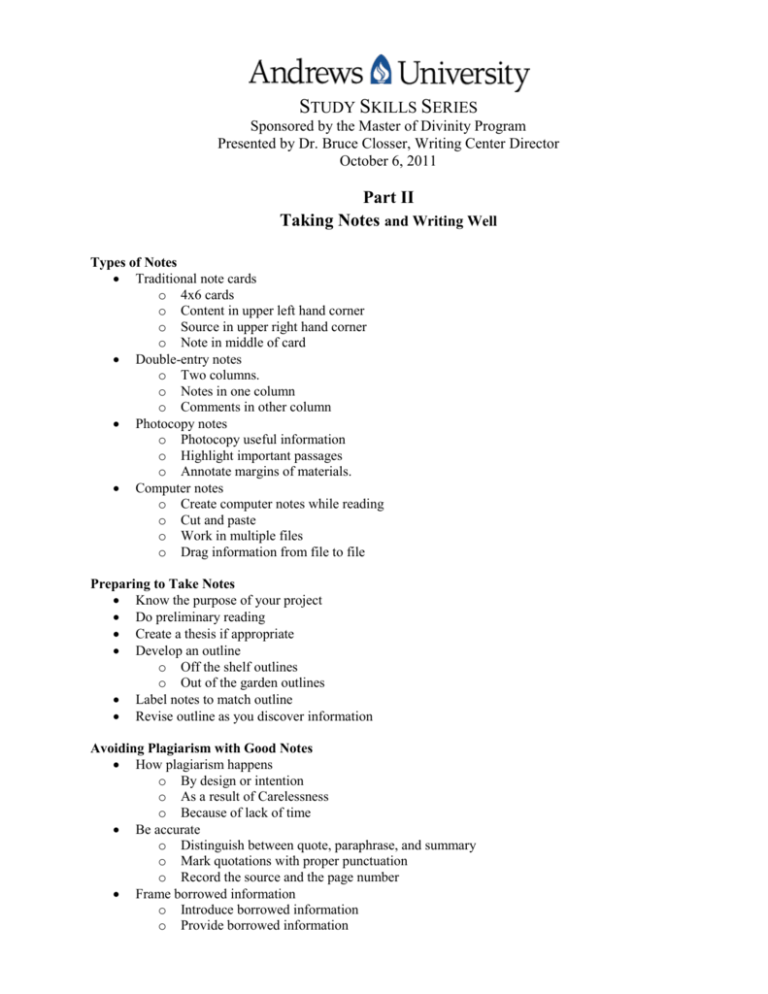
STUDY SKILLS SERIES Sponsored by the Master of Divinity Program Presented by Dr. Bruce Closser, Writing Center Director October 6, 2011 Part II Taking Notes and Writing Well Types of Notes Traditional note cards o 4x6 cards o Content in upper left hand corner o Source in upper right hand corner o Note in middle of card Double-entry notes o Two columns. o Notes in one column o Comments in other column Photocopy notes o Photocopy useful information o Highlight important passages o Annotate margins of materials. Computer notes o Create computer notes while reading o Cut and paste o Work in multiple files o Drag information from file to file Preparing to Take Notes Know the purpose of your project Do preliminary reading Create a thesis if appropriate Develop an outline o Off the shelf outlines o Out of the garden outlines Label notes to match outline Revise outline as you discover information Avoiding Plagiarism with Good Notes How plagiarism happens o By design or intention o As a result of Carelessness o Because of lack of time Be accurate o Distinguish between quote, paraphrase, and summary o Mark quotations with proper punctuation o Record the source and the page number Frame borrowed information o Introduce borrowed information o Provide borrowed information o Explain borrowed information A Typical “Frame” Structure Introduce borrowed information Provide borrowed information Explain borrowed information Deborah Tannen, a linguist who has studied male-female communication patterns extensively, explains that many communication problems experienced by men and women result from differences in how boys and girls play. When they are young, says Tannen, boys grow up in a world of competition where language is used to establish position. By contrast, girls play together in a world of intimacy where language is used to maintain relationships (2728). Tannen’s research suggests that when they grow up men and women retain these communication styles. Men who have used talk all day at work want quiet when they come home. Women who use talk to create closeness want to talk to their family members at night. The conflict in goals creates problems at home. The complaints that she talks all the time and he never talks often result from differences in how boys and girls play as children. Tips for turning your notes into a good paper. Know why you’re writing o To prove what you know to your instructors o To expand your knowledge o To respond to a need to communicate o To satisfy your curiosity Figure out your writing style o Are you a linear writer? o Are you a recursive writer? Be systematic o Make a schedule and stick to it o Have a place to write o Create a pleasant working environment o Drink lots of water o Gather all your supplies o Set a time to write o Know your start-up ritual o Prepare for distractions o Develop a filing system o Save your work regularly Plan o Use a prewriting strategy o Employ creative procrastination More tips for writing a good paper… Writing o Just start writing—begin anywhere o Give yourself permission to write lousy first drafts o Expect to revise o Set reachable goals o Reward yourself when you reach them o Note distractions, then discard them o Plan your breaks o Make writer’s dates with yourself Revising o Set your work aside and return to it o Read aloud with feeling o Get a fresh pair of eyes o Go to the Writing Center
